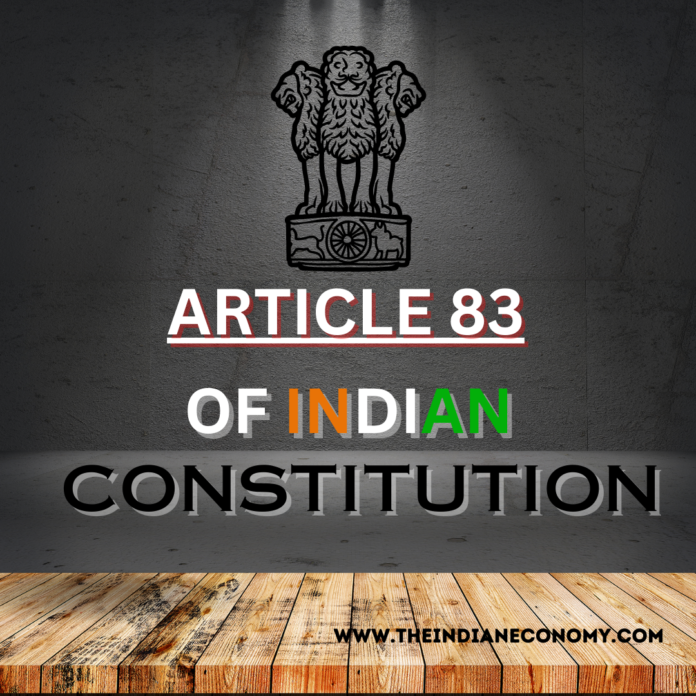Article 83 of the Indian Constitution lays down the framework for the duration of the Houses of Parliament, both the Lok Sabha (House of the People) and the Rajya Sabha (Council of States). This key constitutional article defines the maximum time the Houses can function before dissolution, highlighting the importance of a stable and continuous legislative body. Article 83 allows MPs to execute their constitutional obligations, deliberate on important issues, and defend democracy while serving the interests of the Indian people by determining each House’s tenure.
What does Article 83 states ?
Duration of Houses of Parliament
(1) The council of States shall not be subject to dissolution, but as nearly as possible one third of the members thereof shall retire as soon as may be on the expiration of every second year in accordance with the provisions made in that behalf by Parliament by law
(2) The House of the People, unless sooner dissolved, shall continue for five years from the date appointed for its first meeting and no longer, and the expiration of the said period of five years shall operate as a dissolution of the House. While a Proclamation of Emergency is in effect, Parliament may prolong the aforementioned period by law for up to one year and six months after the P.E.
The Term of Lok Sabha: Stability and Governance
- Article 83 states that the Lok Sabha has five years from its first convening following a general election. This ensures government stability and gives elected officials time to implement their policies. Article 83 prevents premature dissolution and allows the administration to work without the strain of upcoming elections by having a fixed tenure.
- However, the Lok Sabha can be dissolved early under certain conditions. If the President of India, on the Prime Minister’s advice, believes a stable administration is impossible, the Lok Sabha can be dissolved. Additionally, if the government loses a vote of confidence in the Lok Sabha, the President can dissolve the house.
Rajya Sabha: Permanence with Continuity
- Unlike the Lok Sabha, the Rajya Sabha is not subject to dissolution. As stated in Article 83, the Rajya Sabha is a permanent body with a continuous existence. This means that the Rajya Sabha is not entirely renewed at one time. Instead, its members serve staggered terms, creating a balanced mix of new and experienced lawmakers.
- The members of the Rajya Sabha serve a term of six years. Every two years, one-third of the members retire, and new members are elected or appointed to replace them. This arrangement ensures that the Rajya Sabha retains institutional memory and benefits from the expertise of experienced members while also providing opportunities for new voices to be heard.
